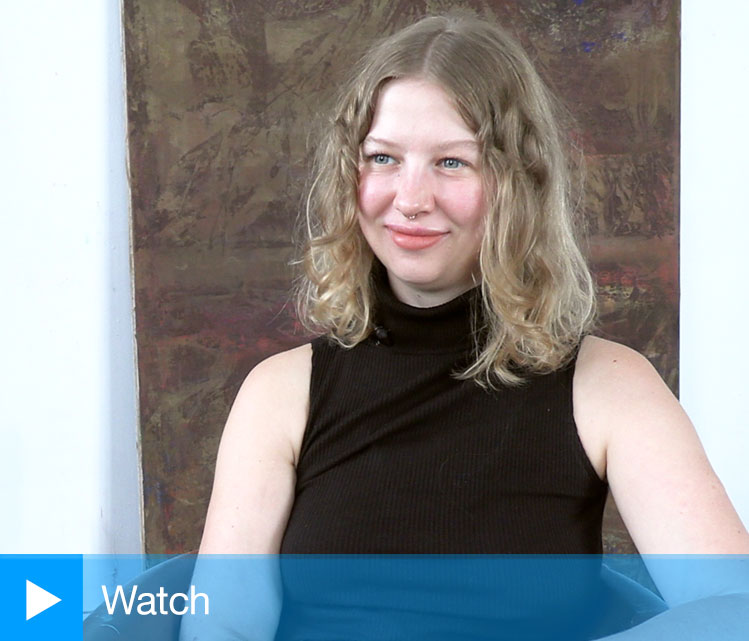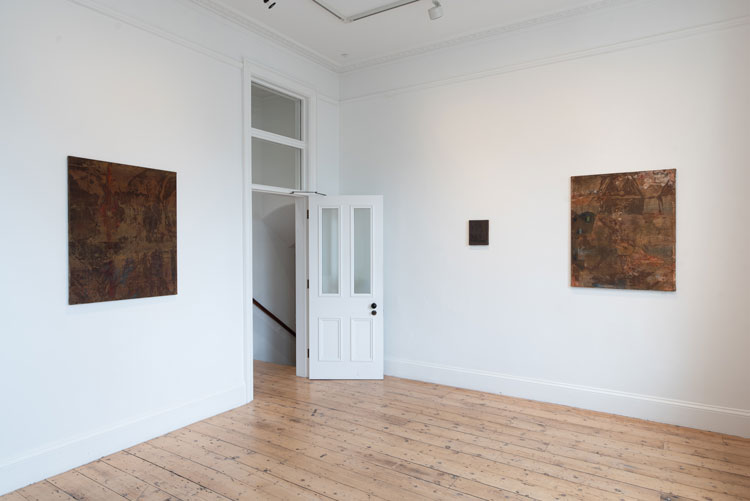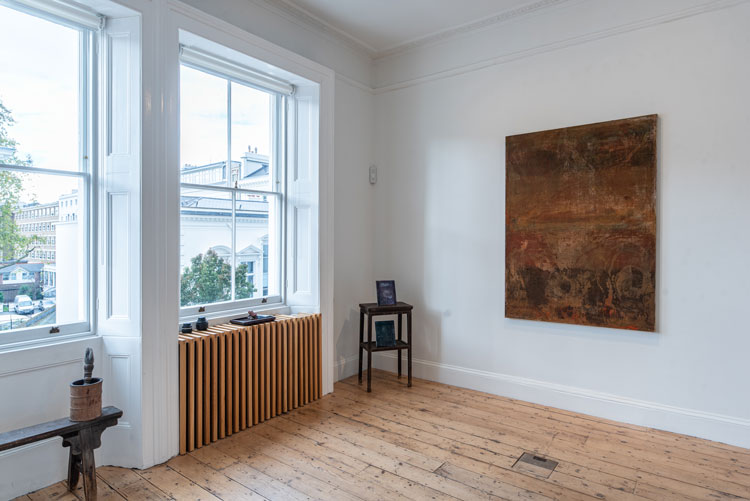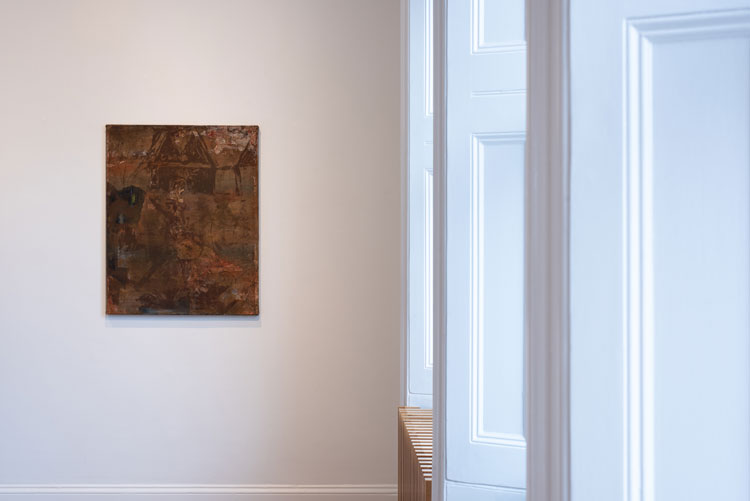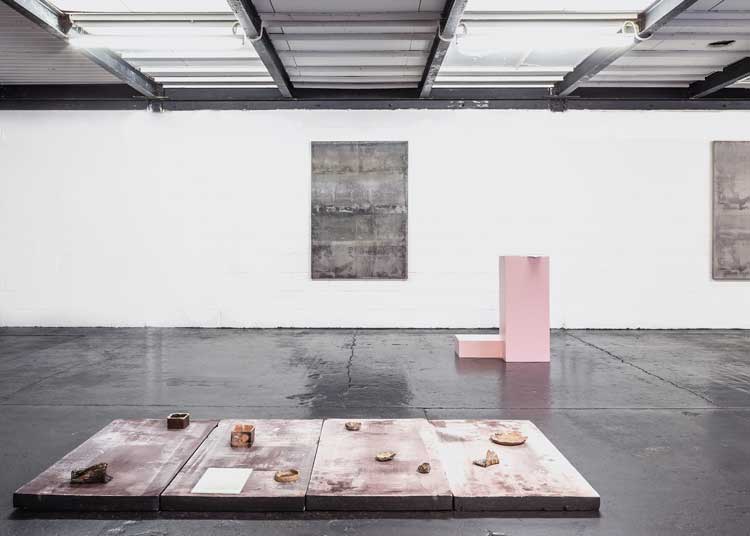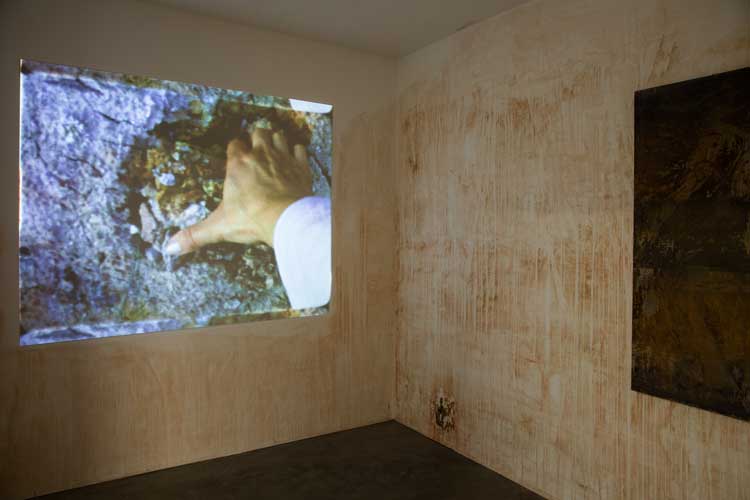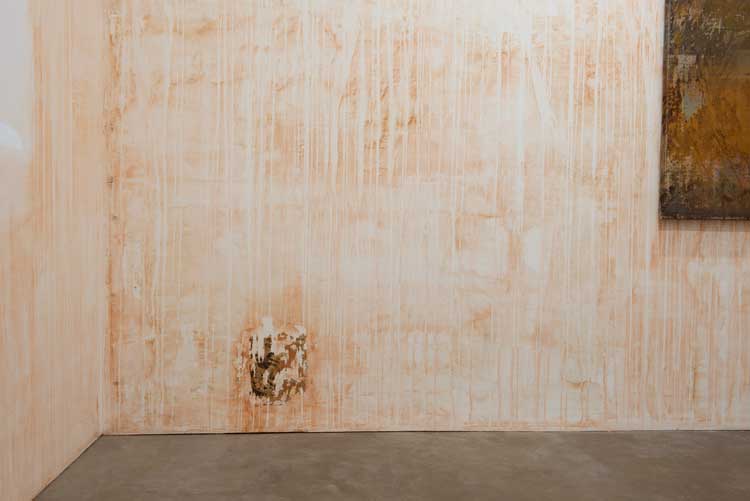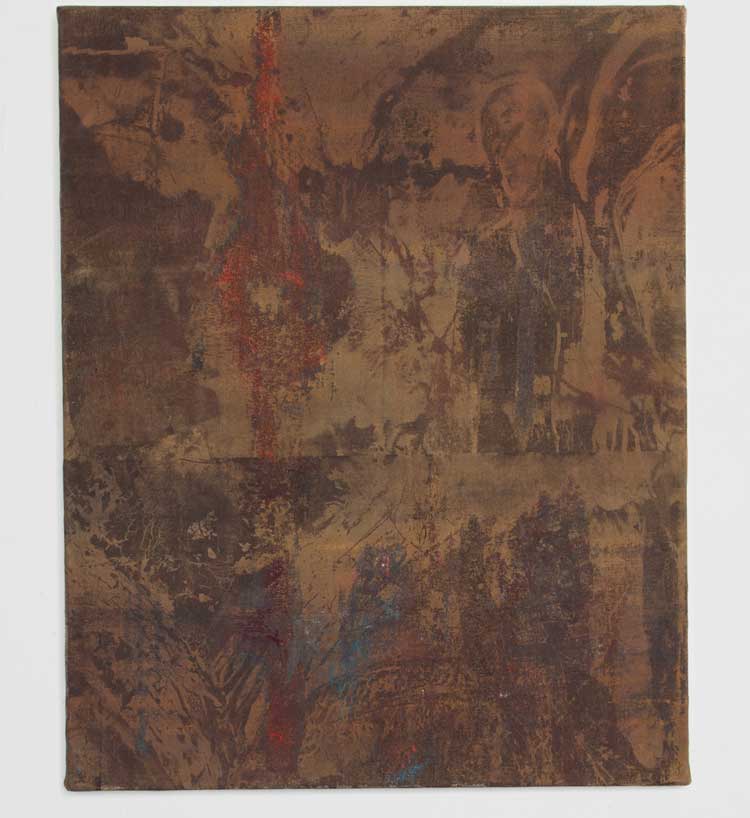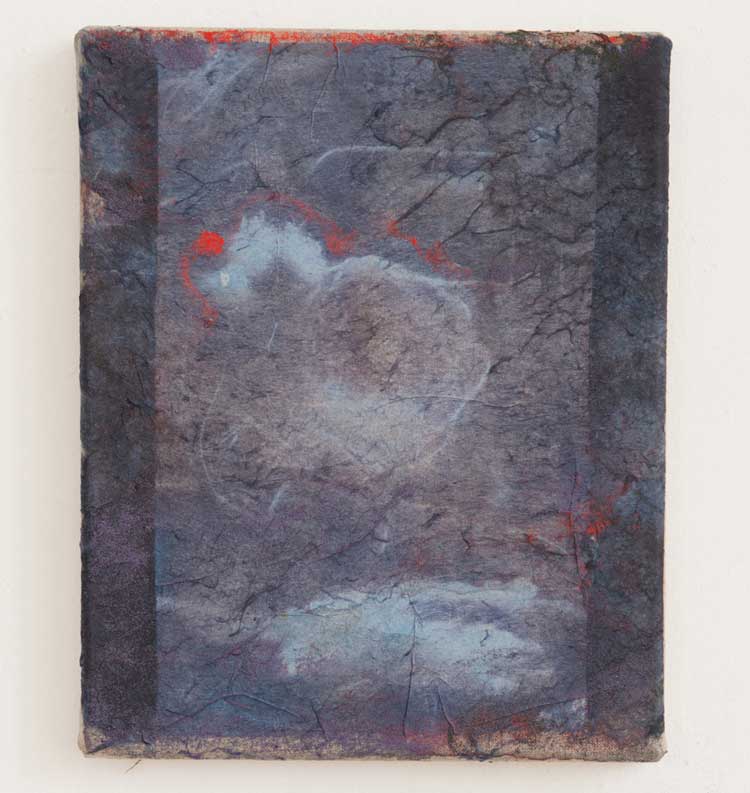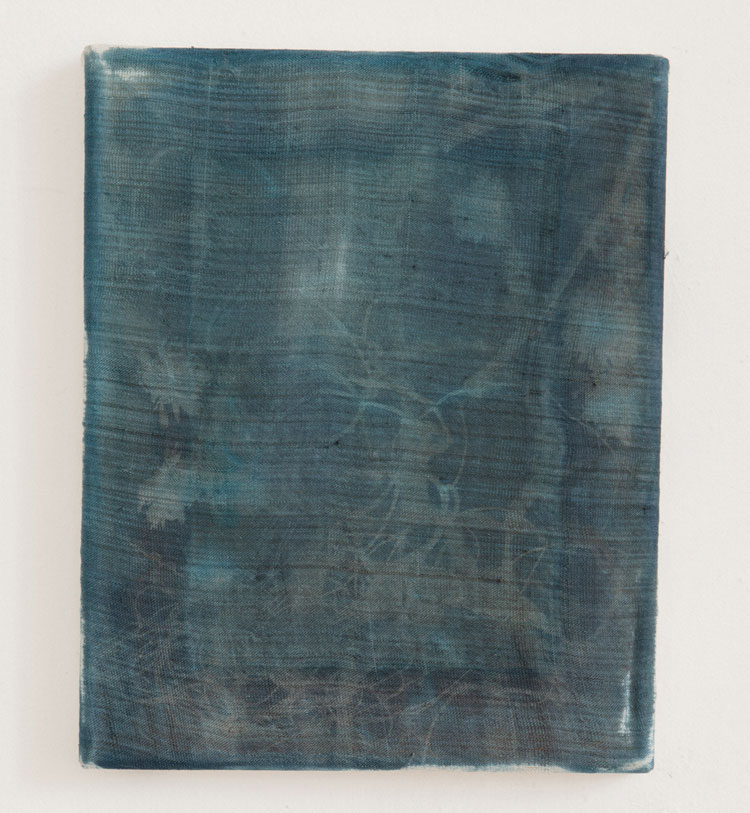

[video1]
Olga Grotova was born, literally, on the eve of the explosion at the Chernobyl nuclear reactor in April 1986, the most serious accident ever to occur in the nuclear power industry, so it is perhaps not surprising that her work reveals her fascination with trauma as expressed through soil, nature and histories that have been denied or violently obliterated.
Although her birthplace, Chelyabinsk, is in the Urals, more than 1,000 miles away, that sense of living through an ecological disaster – with a government that suppressed knowledge of the extent of the catastrophe and its impact on the local landscape and people – seems imprinted in her DNA. It is visible in the large paintings on linen, where the silhouette of a plant, a foot, a limb, is layered over with swirling patterns of pigment, soil and minerals that she grinds herself – often taken directly from sites of humanitarian or ecological assaults.
[image8]
They have the look of parchment, mottled with age, or shrouds. And that quality of timelessness is something she seeks, she says, expressing also her family lineage of stoic single motherhood and even imprisonment; her great-grandmother was deported to a prison camp in Kazakhstan for “wives of traitors” because she married a German man (he was subsequently executed during Stalin’s purges). In 2022, Grotova visited the camp, along with her mother, as part of her research. The resulting film, along with further paintings, was revealed this summer at her show The Friendship Garden, at Studio Voltaire in London.
[image6]
Photography is also part of her practice, although she favours an older form of photography devoid of cameras: using light, she exposes objects to fabrics or materials primed with photo emulsion. She describes it as “one of the first photographic techniques”. This strand of work, titled Our Grandmothers’ Gardens, appeared at the 2022 edition of the prestigious photo exposition Les Rencontres d’Arles.
Grotova studied at Chelsea College of Art and completed her master’s at the Royal College of Art in 2016. She has undertaken many residencies, including at Wysing Arts Centre in Cambridge and Praksis in Oslo. In 2023, she joined a residency through Schoeni Projects in Hong Kong, the results of which are on show at Cromwell Place, London.
[image3]
Door to Door Artist Residency: Szelit Cheung and Olga Grotova
Cromwell Place, London
20 October – 5 November 2023
Interview by VERONICA SIMPSON
Filmed by MARTIN KENNEDY
